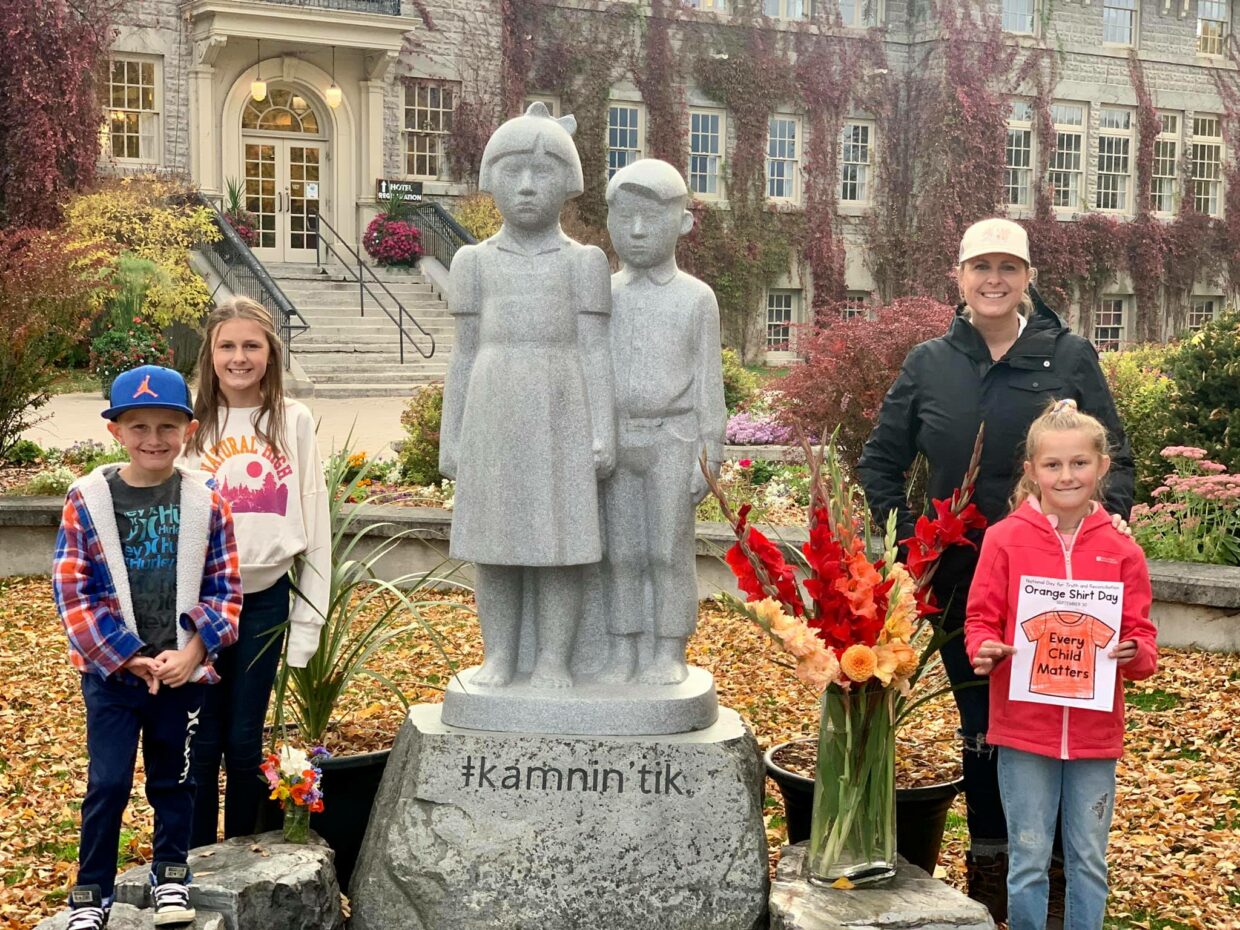Grade: 4 (any Grade really)
Course & Curricular Content:
Social Studies: (1) early contact, trade, cooperation, and conflict between First Peoples and European peoples, (2) the fur trade in pre-Confederation Canada and British Columbia, (3) demographic changes in pre-Confederation British Columbia in both First Peoples and non-First Peoples communities, (4) economic and political factors that influenced the colonization of British Columbia and its entry into Confederation, (5) the impact of colonization on First Peoples societies in British Columbia and Canada, and (6) the history of the local community and of local First Peoples communities.
Career Education: cultural and social awareness (achieved by exploring self-identity, acknowledging cultural differences, honouring indigenous traditions, etc.)
Time of Year: Fall (near “Truth & Reconciliation Day”)
This field trip has been heavy on my mind for weeks… actually it’s been over a year.
Last year, on Truth and Reconciliation Day, my little family drove to St. Eugene where we walked around the grounds and talked about the history of that place. We talked about what it would feel like to be a young, Indigenous child entering the school, what it would be like to be an Indigenous parent having your child taken to a school that was foreign and strange to you (never mind abusive!), and what it would be like as a residential school survivor today. Walking around the grounds with my children created an abundance of emotions for me as I imagined other mothers who have walked those grounds but never left with their babies. Being at St. Eugene gave my children and myself an extra sense of reverence and respect for the injustices that were done to the Indigenous people. It brought those stories to life. It made it personal. It made me feel like I had a part in the story. And I want my future students to feel that.

I have lived 40 minutes away from this historical site for the majority of my life but I had never visited it until I was 30 years old. How can that be? How had that piece of history been kept from me for so many years? I vow to do better for myself, my children, and my students.
Prior to beginning this field trip, I would have lots of discussions (age-appropriate of course) with my class about the history surrounding residential schools. I would prep the students by reading some stories and creating meaningful artwork. I would read “The Orange Shirt” story or watch this reading of the book:
I would discuss the rules for the trip and how we would all need to be extra respectful as the grounds and building have deep history.
I know St. Eugene offers field trips for students. I have not been on one of these guided field trips, nor do I know the cost, but I firmly believe that it can be a life-long memory for the children. Depending on how long the tour is, I’d love to set up a “meet and greet” with some of the Aqamnik students where they could introduce some Indigenous games to my students and/or share some stories from their family histories. I’d hope that this could create a “pen pal” type relationship where we could stay in contact and learn from each other.
Next week, I get to tour St. Eugene as part of my “Elementary Field Experience Seminar I” class. I have a lot of emotions already bubbling in me as I prepare for this opportunity. It’s important to me to do this field trip “the right way.” I want to be respectful (that’s very important to me) but I want to somehow keep the trip “fun” for the students and I definitely don’t want to make it too “heavy” feeling for young children. They need to know the truth but in age-appropriate ways. Some things, some topics, are just too heavy to put on children until they have developed more coping skills/strategies.
UPDATE (November 15, 2022): Yesterday, I was able to experience the St. Eugene field trip first hand. It was wonderful. The video we watched is for older students (Grade 7+) and visitors and brought tears to my eyes but it was nothing graphic. I would have no problem with my Grade 5 daughter watching the film as it shone light on the residential school experience without being too graphic. There is an alternate film that they show for younger students which is even less graphic. There is lots of standing and listening with little interaction. Because of this, I would suggest maybe saving this field trip for Grade 6 or 7 students. The younger children I would probably stay outside on the grounds and create my own field trip experience. Possibly, connecting with the ʔaq̓amnik̓ Elementary School students to explore Indigenous games and stories.
Here are some additional resources I found on Pinterest to supplement this field trip:

cblake November 14, 2022
Hi Kim!
I really love the idea of a trip out to St. Eugene. I feel so deeply that it is incredibly important for our students to not only learn the truth but learn the truth from Indigenous Peoples’ directly. I had the opportunity to go to St. Eugene in I think about grade 6. To this day I still remember so many things from that trip that I continue to think about through my life. I look forward to attending a tour again today in EDCI 250. I do feel the same like you say, this experience truly is for any age. I appreciate that you would want to prep the students with readings/stories and making shirts prior to the trip to ensure utmost respect and have a base understanding as it is a very delicate topic.
Chelsea